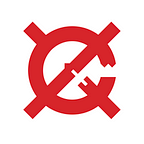Artifact and Trap mechanism of Red and Blue
Through the previous introduction, you can understand that there is the concept of regions in Red and Blue, and each region has three levels of status, Lv.0, Lv.1 and Lv.2.
- In the above picture, our half, from left to right are the Lv.0 area, Lv.1 Fire Zone and Lv.2 Fire Temple
Among them, the second-level area is called the “temple”. Compared with the “area”, the “temple” can provide us with two special locations, and these two locations are used to place the key mechanisms that we will introduce — -Interfering with powerful traps and powerful artifacts. Let’s call these two positions “Artifact position for trap” temporarily.
In Red and Blue, each temple will provide 2 artifact positions for trap(as shown in the The Earth Temple below), you can freely choose whether to place traps or artifacts (currently our designers tend to be wrong traps and artifacts The number is limited, but in the subsequent balance adjustment, this part may be changed to achieve a more reasonable balance). When the trap artifacts in a temple are full, play artifacts or traps to the temple, and you can also perform replacement operations.
Let’s take a closer look at the Traps and Artifacts.
1. Trap
First of all, traps are spell cards, which are a subcategory of spells. When a trap is played, it will be judged to have played a spell. Trap can only be played against one’s own temple, and once played, it will occupy a trap artifact position. The most interesting thing about the Trap is that the opponent cannot view the information of your trap. It is a down card, and the specific effect will only be known when it is triggered.
By definition, a trap is an effect card that waits for the enemy to trigger, so a trap cannot be triggered in its own turn, and can only be triggered in the opponent’s turn. In our game, a complete trap includes: trigger conditions and trigger effects. After the combination of conditions and effects, you will get a complete trap.
There are many trigger conditions for traps. Here are a few examples:
-When troops in the area are attacked
-When the opponent plays his hand each round
-When entering the unit for the first time in the opposite area
The trigger effects of traps are also varied. For the single unit, for the area, for the hero, and for the enhancement of your own unit… We will not go into too much detail temporarily. You can wait for our test version and experience it in the game for yourself. Let’s do a display of trap cards.
Trap will play a very powerful disruptive role in the strategy. It can disrupt the opponent’s resource allocation through various trigger mechanisms, block the opponent’s deck combo, control the opponent’s key forces. Although the trap sounds like an auxiliary mechanism, don’t underestimate the effect of the trap. Stepping on a clip is nothing. If you step on a large electromagnetic cannon, you will not be able to eat it.
Regardless of the effect of traps, just a trap in your field can have a great impact on the opponent’s psychology. And there is a part of the effect that can consume a lower cost to create traps. You can constantly replace your traps.
If you still have an impression, the second card we’re introducing is a trap-centric hero: the original genius Tick Copper
2. Artifacts
Another mechanism to be introduced today is the Artifacts, which is a separate classification that does not belong to the force and does not belong to the spell. Like traps, the instrument can only be played against its own temple, and after hitting it will occupy a trap god position. But contrary to the trap, the opponent can view the information of your instrument, it is a clear card.
The Artifact is a kind of card which will have a greater impact on the environment. Artifact appear more active than traps that need to be triggered, and while there are also Artifact that need to be triggered, most of them are cards that can make a huge difference regardless of whether they are triggered.
The passive trigger conditions of the Artifact are similar to traps, but the instrument has many more active, continuous, and range effects.
- Trigger once per turn
- Trigger when you actively play certain cards
- - Your troops will have a hold in the area where the instrument is located
- -so on
Like The hand of destruction Artifact in the picture, it has the key word Start, its effect is triggered at the beginning of each round. And there are many kinds of effects of the instrument, some of the effects of the instrument can even be described as “miracle”, is a genuine artifact. Like the miracles in the strategy game, it can provide physical and spiritual inspiration to your troops.
Finally, we need to emphasize that traps and instruments themselves are not attacked and defended, nor can they be directly attacked, but can only be destroyed by effect. At the same time, traps and instruments need to be linked to other spells and forces, and not just as a separate strategy. Reasonable use of traps and Artifacts in the war, so that your troops are full of wings, but also do not forget to prepare some tools of Traps and Artifacts to deal with the opponent.
